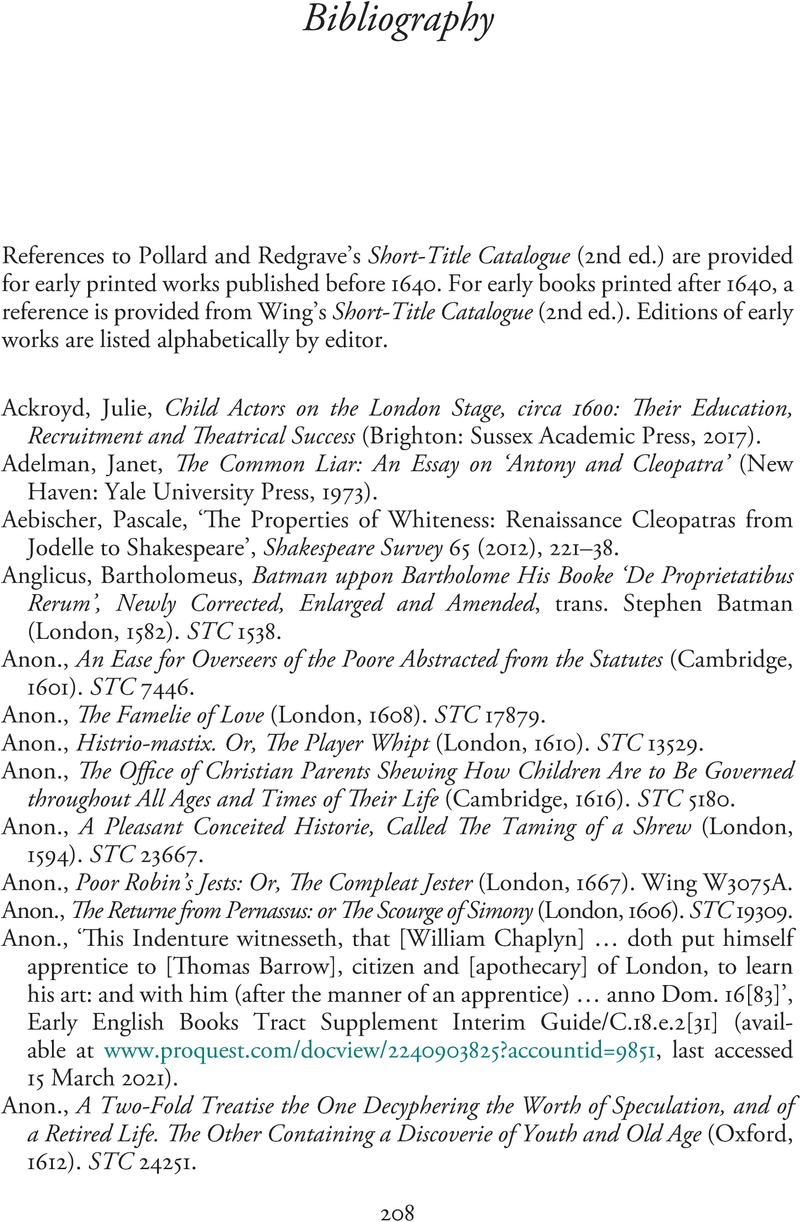Book contents
- Boy Actors in Early Modern England
- Boy Actors in Early Modern England
- Copyright page
- Dedication
- Contents
- List of Illustrations
- Acknowledgements
- Textual Note
- List of Abbreviations
- Introduction
- Chapter 1 ‘All Feats of Activitie, and Motions’
- Chapter 2 Staging Skill
- Chapter 3 ‘The Bettering of the Body’
- Chapter 4 ‘Sport Indeede’
- Conclusion
- Bibliography
- Index
- References
Bibliography
Published online by Cambridge University Press: 25 August 2022
- Boy Actors in Early Modern England
- Boy Actors in Early Modern England
- Copyright page
- Dedication
- Contents
- List of Illustrations
- Acknowledgements
- Textual Note
- List of Abbreviations
- Introduction
- Chapter 1 ‘All Feats of Activitie, and Motions’
- Chapter 2 Staging Skill
- Chapter 3 ‘The Bettering of the Body’
- Chapter 4 ‘Sport Indeede’
- Conclusion
- Bibliography
- Index
- References
Summary

- Type
- Chapter
- Information
- Boy Actors in Early Modern EnglandSkill and Stagecraft in the Theatre, pp. 208 - 234Publisher: Cambridge University PressPrint publication year: 2022

